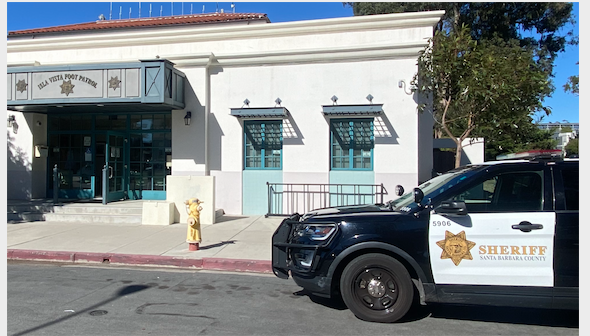Hannah Adams & Natalie Aymond
Opinions Editor
May 23 marked the eighth anniversary of the 2014 Isla Vista (I.V.) shootings — a series of misogynistic terror attacks that ignited UC Santa Barbara’s (UCSB) mission to fortify and improve campus security. However, reflecting on the changes in policing and community resources in the years to follow, has there really been much change?
Eight years later after the horrendous events of the I.V. shooting, it seems as if little has been done to assure local residents and students alike that they are living in a safe environment. Just this year, we have seen rampant sexual assault reports, more gun violence incidents, and, recently, multiple reports of attempted kidnappings. Most recently, to add, there was even a car accident on May 28 that resulted in three fatalities.
While this year may have been defined by a series of shortcomings as opposed to advances in campus safety improvements, these incidents are not just unique to UCSB and span larger than just being issues of gun violence. And while it may have been a tragic shooting eight years ago that sparked this felt need for increased safety, the possibilities for tragic events like this come from the risk of living in a college town like I.V.
Post-2014, the I.V. Police Department (IVPD) cracked down on safety, implementing many anti-guest policies in hopes of dissuading unwanted presences in the community. The most lasting effect of these policies are the lingering sentiments of “Keep I.V. Local” during big events such as Halloween and Deltopia. This has dramatically changed the environment of such events, as noise ordinances and fences have been used to enforce this rule. It brings a level of seriousness to the community and makes the I.V. population aware that the police, and even UCPD, are not standing idly by.
Effects of this can be seen through the changed magnitudes of these events. Halloween, for example, used to be one of the bigger party weekends at UCSB, but since increased violence has taken place, now “Halloweekend” is almost nonexistent here. In fact, most of the school and I.V. population clears out and flocks to other schools to celebrate.
Another example to consider is Deltopia, especially because it took place this year after not being able to in some previous years due to COVID-19. Leading up to the events this year, more fences, anti-guest policies, and noise ordinances were advertised and acted upon. However, there was still a casualty and many injuries and citations. This illustrates the struggle of the IVPD and the university to effectively control social situations to completely mitigate risk. Even with increased precautions and protocols over the years in response to other incidents, there is still a level of risk that cannot be eliminated that comes with the nature of this party school.
Many students are resentful of UCSB’s lack of responsibility and action. Still, one asks: to what extent is UCSB fully responsible for the unfavorable events that unfold? Tragedies and other concerning events occur because they fall within the consequences of the social life on campus and the neighboring college party town.
The issue here isn’t necessarily that UCSB lacks campus safety, it’s more so about the fact that I.V. is out of the campus’s reach despite it being so close. Furthermore, there are bigger, more widespread issues at hand that these tragedies can be attributed to.
It is important to mention the tragic coincidence of the Robb Elementary School shooting in Texas that occurred just a day after the eighth anniversary of the I.V. shooting. It is hard to consider how our safety has improved in the last eight years when an event like this, even in a different state, happened just the other day. It puts into perspective the broader issue of gun-violence that is obviously not an issue unique to Isla Vista.
It is a bigger problem. Gun-violence, over time, has been and still is an issue at the national level. However, as we have seen through many events with time, gun-violence has become largely an issue at the institutional level as well. It is not just affecting business in which shooting takes place, but schools from which universities get caught in the blame for not having been active enough in their safety precautions.
In conclusion, a shooting can happen anywhere, at any time, and involving any group of people. It is counterproductive to put blame on schools to fix these issues when gun-involved incidents are an issue stemming from the lack of national response to gun laws.











